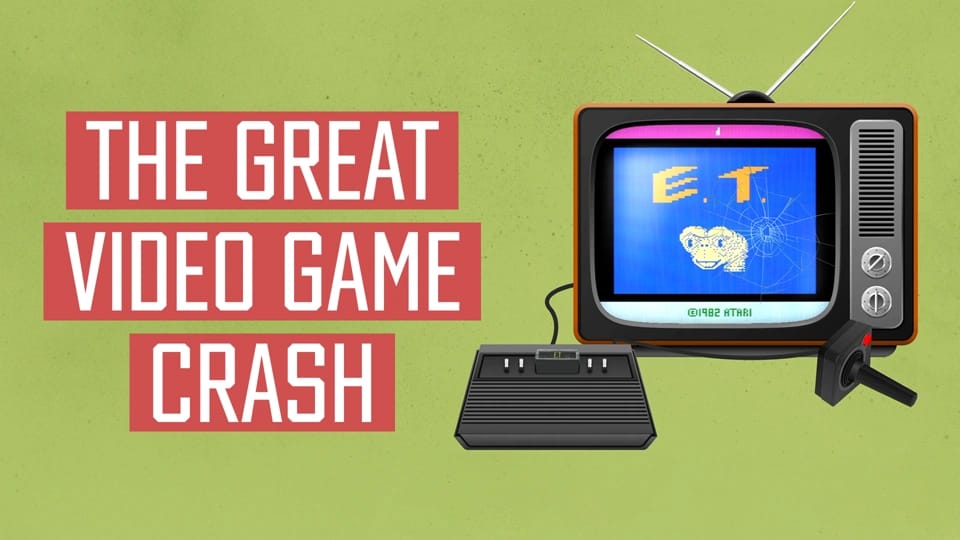9 April Fools’ jokes & pranks for the classroom
In this guide
Forming constructive relationships with students is one of the many aspects of teaching that builds engagement. Essentially students “who have close, positive and supportive relationships with their teachers will attain higher levels of achievement than those students with more conflict in their relationships” (Kimm-Kaufman and Sandilos, 2015).
One way that we can build relationships with students is by including humour in our classrooms. April Fools’ pranks and jokes can be an easy way to add humour in a constructive and enjoyable way.
Something to remember when deciding how humour will be a part of our classrooms is considering students’ backgrounds. Not every culture considers the same things as funny.
Another consideration is the developmental stage of your students. Students in primary school may not understand a joke, but students in the upper secondary stage might.
Neurodivergent students may also struggle with finding jokes or pranks humorous. This is not because neurodivergent individuals lack a sense of humour or that they do not find things funny.
In contrast, neurodivergent individuals often “engage less than neurotypicals in “social interaction” laughter” (Jack, 2021). They are not just laughing because others are laughing, but reserve their laughter for things they truly find funny.
Overall, when deciding what jokes to share and pranks to play for April Fools’ Day, take into account your students and what would be developmentally and socially appropriate.
1) Invisible ink messages
Invisible ink messages can be a fun way to “prank” students without causing significant disruption.
Write the day’s announcements or messages on the board in invisible ink. You can also write messages to your students on paper. Feign confusion when they cannot read your messages.
Students can create invisible ink messages for their friends or family too. This is a great way to engage all students in a fun writing activity for April Fools’ Day.
Teaching students the science behind how invisible ink works can be a fun way to include science standards as well.
2) Spelling/grammar errors
This particular prank is easily modified for any class or student age group.
Display a spelling and/or grammar error in any written communication students will view that day (notes, announcements, a worksheet, etc).
See if students notice your mistake. It would be even better if this is a spelling or grammar skill that you have previously worked on with students in class.
You can even give students a reward for finding your mistake.
3) Not my subject

Start teaching a completely different subject than what you normally teach. When students are confused, continue to teach like this is what you always do. Stop when it seems that the students have figured out your ruse.
Modifying this prank to fit any schedule or classroom is simple. If you teach in a self-contained classroom, start with the subject you teach at a different time. For example, if you typically teach reading first, start teaching math instead.
If you teach in a secondary setting or have different groups of students throughout the day, teach something completely different.
Maybe you have a hobby you can begin teaching about. I, for example, make jewellery out of resin in my spare time and could use that knowledge to teach like it was something I always teach.
If you only teach maths but are knowledgeable about a particular event in history you could teach about that as well.
Stuck for ideas? Here are some videos that you can use to launch your practical joke.
4) Where’s my seat?
If you choose to do this prank, keep in mind that not all students can handle a complete change in routine or location. You must know that your students will not be upset by rearranging the space.
Rearrange students’ seats so they are not in the usual spot. You can also turn some desks/tables upside down. Proceed as if this were a normal arrangement.
You can also move your desk or move an object that is frequently used in the classroom. Something that is easy to do and to put back when the prank has been revealed.
5) Pop quiz
Give students a pop quiz. There are several ways to structure this prank:
- Give them a quiz over something they have clearly never learned and insist they have notes about it and should complete the quiz.
- Create a quiz where all of the answers are B for multiple choice, or all of the answers are True for true/false.
- Pass out a “quiz”, but emphasise the importance of reading/following all directions.
Below is my own “Following Directions” quiz that I’ve used in the classroom:
Can you follow directions?
- Read all of these steps before doing anything.
- Write your first name in the top right corner of your paper.
- Flip your paper over and fold it in half.
- Fold it in half again.
- Fold it in half two more times.
- Smile and wave at your teacher.
- Unfold your paper.
- Write your last name in the bottom right hand corner of your paper.
- Draw grass along the bottom of your paper.
- Flip your paper over.
- Use your pencil to poke 8 holes in a circle in the top right corner.
- Starting in the top left hand corner box, write the numbers 1-10. One number in each box.
- Flip your paper over.
- In box number 2 (look at the back labels) write 3 capital letter Ps.
- Draw a circle around the holes you poked in the paper.
- Set your pencil down, stand up, spin in a circle 2 times.
- Sit back down and draw a flower on your paper.
- Now that you have finished reading everything carefully, only do steps 1 and 2. When you are finished, place your pencil down and your head down on your desk.
6) Upside down

Write lesson plans, schedules, or announcements on the board upside down.
If you use a slide presentation, you can also display information upside down. A slide presentation is actually easier to make upside down!
Example Upside Down Agenda

Another way to accomplish this upside-down phenomenon would be to read a book upside down. This would be more appropriate to a reading classroom where students are familiar with read-aloud. As you are reading, pretend like nothing is out of the ordinary.
Reading upside down can be a challenge. If this is difficult for you, print the words the correct way and have them accessible. If the book has a jacket, you can also just turn the jacket upside down.
7) Dress up day
Come dressed up as a character or a completely different person. Teach like you are that character.
For example, when discussing this article with another teacher, she said that her English teacher would occasionally dress up as Batman and teach a class as Batman. This was a very memorable experience for her.
This idea reminded me of a book I used to read in primary school entitled, “Miss Nelson is Missing” by Harry Allard. In this book, Miss Nelson’s class is atrocious. She decides to take action and comes to school dressed as Miss Viola Swamp. Several funny theories are created by the students regarding Miss Nelson’s disappearance. The students learn to appreciate the lovely teacher they had in Miss Nelson.
This could be a fun book to read with primary-aged students for this day.
8) What’s that noise?
Install a random noise device of some sort in your room. When the noise is made, pretend not to hear.
You can also enlist the help of students. Have random students say a code word or make a noise throughout the day. Continue to pretend that you do not hear the noises.
9) Teacher swap
This prank takes some coordination with another teacher but can provide a humorous student response.
Switch the teacher that is in each classroom. This works better if you team teach or all of the teachers in a group know the students.
Greet students at the door and teach like nothing is out of the ordinary.
I considered adding swapping classrooms, but upon further reflection, I realised swapping teachers would take considerably less work!

If pulling a prank is not something you are comfortable with, you can always share a joke with your students. There are many sources out there for jokes for kids. Look for jokes that are appropriate and appeal to a wide variety of students.
As an English teacher, I have an affinity for jokes that are a play on words. Of course, this also depends on your students and their ability. If a joke requires too much explaining, it loses its humour.
Below are a few wordplay jokes my students (and my own children) have enjoyed in the past:
- What did the pirate say when he turned 80?
- “Aye matey.”
- Why are peppers the best at archery?
- Because they habanero!
- How does a vampire start a letter?
- Tomb it may concern!
- What do you call an elephant that doesn’t matter?
- An irrelephant!
- Why can’t a leopard hide?
- Because he’s always spotted!
- What’s the most popular video game at the bread bakery?
- Knead for Speed!
- What is corn’s favourite music?
- Pop!
- Why can’t Monday lift Saturday?
- It’s a weak day!
- What’s a ball that you don’t shoot, throw, bounce, catch, or eat?
- An eyeball!
- What is a maths teacher’s favourite dessert?
- Pi!
Creating an environment that embraces fun is not always easy, but can benefit students and teachers. April Fools’ pranks and jokes do not have to be elaborate but can show students that you have a sense of humour and want to engage in lighthearted and fun activities when appropriate.
Sources
- Alexander, A. (2024). How did April Fools Day Get Started? Available at https://www.rutgers.edu/news/how-did-april-fools-day-get-started (Accessed May 29, 2024).
- Jack, C. (2021) Do People with Autism Have a Sense of Humor. Available at https://www.psychologytoday.com/us/blog/women-autism-spectrum-disorder/202109/do-people-autism-have-sense-humor (Accessed May 29, 2024).
- Little House of Science (2018) Write Secret Messages Using Invisible Ink Experiment. Available at https://www.littlehouseofscience.com/write_secret_messages_using_invisible_ink_experiment. (Accessed May 29, 2024).
- Rimm-Kaufman, S. and Sandilos, L. (2015). Improving Students’ Relationships with Teachers to Provide Essential Support for Learning. American Psychological Society. Available at https://www.apa.org/education-career/k12/relationships (Accessed May 30, 2024).

Mattie Farrer
briefcase iconAVID Site Coordinator / Content Curator
Mattie Farrer has been an educator in various grade levels and capacities during her career. She has a passion for supporting English learners and their language development. She also loves helping teachers reach all students.
Other posts
Want more content like this?
Subscribe for blog updates, monthly video releases, trending topics, and exclusive content delivered straight to your inbox.










